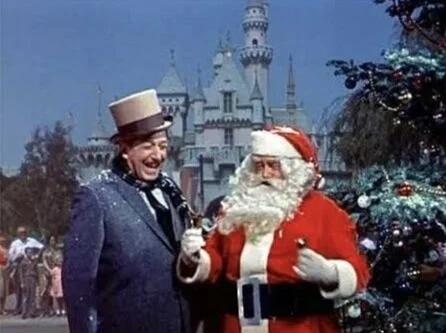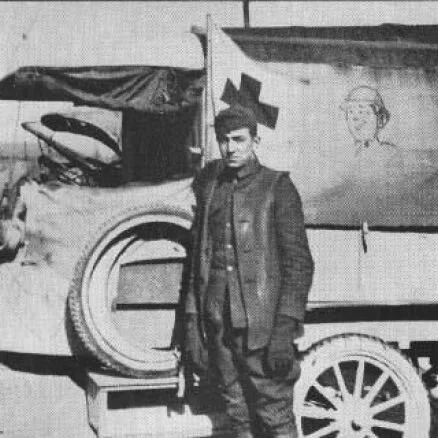Walt Disney - During the Wars & Strikes
Welcome back! In part 3 we learned about the processes it took for the Walt Disney Animation Studios to pump out their first 5 films: Snow White, Pinocchio, Fantasia, Dumbo, and Bambi. We often like to think about the happy times for Disney: watching these films for the first time, visiting Disneyland, seeing Walt's messages on television, our favorite songs and more. However, many people don't know about the Disney strike that happened in the 1940s, and how Disney survived through World War II.
The Strike
As I remember, it was the toughest period I've had in my whole life. It wasn't a worry of losing anything, it was just sort of a big disappointment in a lot of things. - Walt Disney
The first problem the studio encountered while entering the 1940s, was that they were losing animators due to the fact that they needed men to join the war. Many of the young animators that were doing most of the work for Walt had left. He was able to keep some though, as they helped him make films for the services instead.
Another reason why animators had been leaving the studio was because they went on a 3 month Disney animator's strike, saying they wouldn't work for Walt anymore. This happened in 1941, the same year that the US joined World War II. The company took a deep dive, losing employees and ultimately also losing profit this way as well. The animators felt they weren't getting the money they were promised after the successes of films like Snow White. Once the studio moved to Burbank, some of the benefits that employees originally had were taken away. Their percentage of pay was lowered as well from the short films. Once Art Babbit, the president of the Disney company union, said he was resigning, Disney fired him. This started an uproar on May 29th, 1941, and most of his workers walked out.
Disney animators strike
The animators were trying to convince Walt to become a unionized studio, to add more structure to the company. They felt that there was too much of a hierarchy system, and that Walt openly favored the men who were being paid the most. Walt then presented a speech to his 1,200 employees, stating that he gave privileges to the men who worked the hardest. He knew what it took for him to get to the top, which was not easy as we know, and wanted to reward the workers who were working just as hard as he did. People were not happy with this response.
Disney strike as depicted by the Walt Disney Family Museum
The strike was constant for 5 weeks, and Walt was fearing that the bank would get involved. He relied on banks for loans for his films, and if they decided to take them away, he wouldn't have much of anything to work with. Instead of making impulsive decisions to try and please everybody, he left for Latin America, to let it boil down a bit.
Eventually the strike finished when he finally agreed to sign a union contract. By this time he had lost over 500 employees, and felt betrayed by the ones that he truly idolized. It's rumored that Disney designed the clowns in Dumbo after the strikers, but we can't say this is really true. It's definitely funny to think about though.
Image from: https://disneyvillains.fandom.com/wiki/Clowns
World War I & II
If we rewind all the way back to 1917, 16 year old Walt was interested in leaving school behind and joining the war effort. As he researched what he needed to get in, he quickly realized he wasn't old enough to join. He kept looking into ways he could get involved, and came across the American Ambulance Corps through the Red Cross, and he was qualified to be an ambulance driver (or so he thought). The only thing he didn't have was a birth certificate to get a passport. He asked his father, Elias, to sign a birth certificate for him to let him join. Elias immediately declined saying that he would pretty much be sending his son to his death. Walt then turned to his mother Flora, whom agreed to it as she felt it was better than him meeting bad influences in school. Once Flora signed it, Walt was ready to hand it in, but then looked over the qualifications again. He was 16, the minimum age was 17. He scratched out the year 1901 on his birth certificate and changed it to 1900. It was accepted, and he headed to France to drive the ambulance.
Replica of Walt’s ambulance
Walt’s permission from his parents, and him next to his ambulance
A note from Walt, “doing something I very seldom do, “work””
Now fast forwarding to 1941, Walt being 42 years old now, he joined the war effort in a different way. He stopped making our beloved Disney films for a little while, and replaced them with propaganda films, training films, public service films, and had his artists create emblems for the service men. The studio manager called Walt the night that Pearl Harbour was bombed. He told Walt that the army wanted to move into the studio, and that he wanted to ask Walt if it was okay first. But, despite whether Walt was going to say yes or no, the army moved in anyway. The Walt Disney Studios became a war plant.
Many men slept in the studios overnight, cooked their food there, and it was heavily guarded. Most businesses would find this disrupting and disturbing, but because Walt had been so involved in the first World War and was fascinated by the military, he allowed it and welcomed it. He did it because he cared, was quite patriotic, and always wanted to be involved.
Some of the films he was making stayed true to his branding, showcasing Donald Duck in a military uniform. Despite his nature to stay true to his studio to keep it alive, 90% of his films that year were all directed toward governments, and all educated the viewers about different aspects of what was going on. He even created a film that depicted Hitler in it. Some of the names of these films were Der Fuehrer's Face, Out of the Frying Pan into the Firing Line, The New Spirit, and Victory Through Air Power.
Der Fuehrer's Face, an anti-Nazi film. Image from: https://www.imdb.com/title/tt0035794/mediaviewer/rm3412872192
Before the war, the Disney studios put out about 30,000 feet of film, and during the year of the 1943, they put out 300,000 feet of film. Walt did not stop until it was over.
When the war finally ended, Walt's motivation to keep producing films did not stop, but only increased. He got most of his employees back who had left to join the front lines, and had 2 groups of animators to organize; those who had been gone and returned, and those who had been actively making the war films. He designated everyone to a job he felt all could grow in and work most efficiently in. The first film that came out after the war had officially ended was "Make Mine Music" on April 20th, 1946, and the first big successful film after that was "Cinderella" on February 15th, 1950.
The whole of the 1940s was the toughest time of Walt's life, as he said multiple times. From almost losing his company, losing friendships, and being an active part in a World War, he lived through nightmares that any business wouldn't dare go near. But, without these dark times for the studio, he wouldn't have been able to rise up even more afterward and become the success that Disney has become.
In the next part, we'll begin talking about what everyone's been waiting for: the origins of Disneyland. It'll include the original model of the castle, the original model of the park, bank proposals, the first rides, and more. Stay tuned!
**credit for info and some pictures goes to the Walt Disney Family Museum















